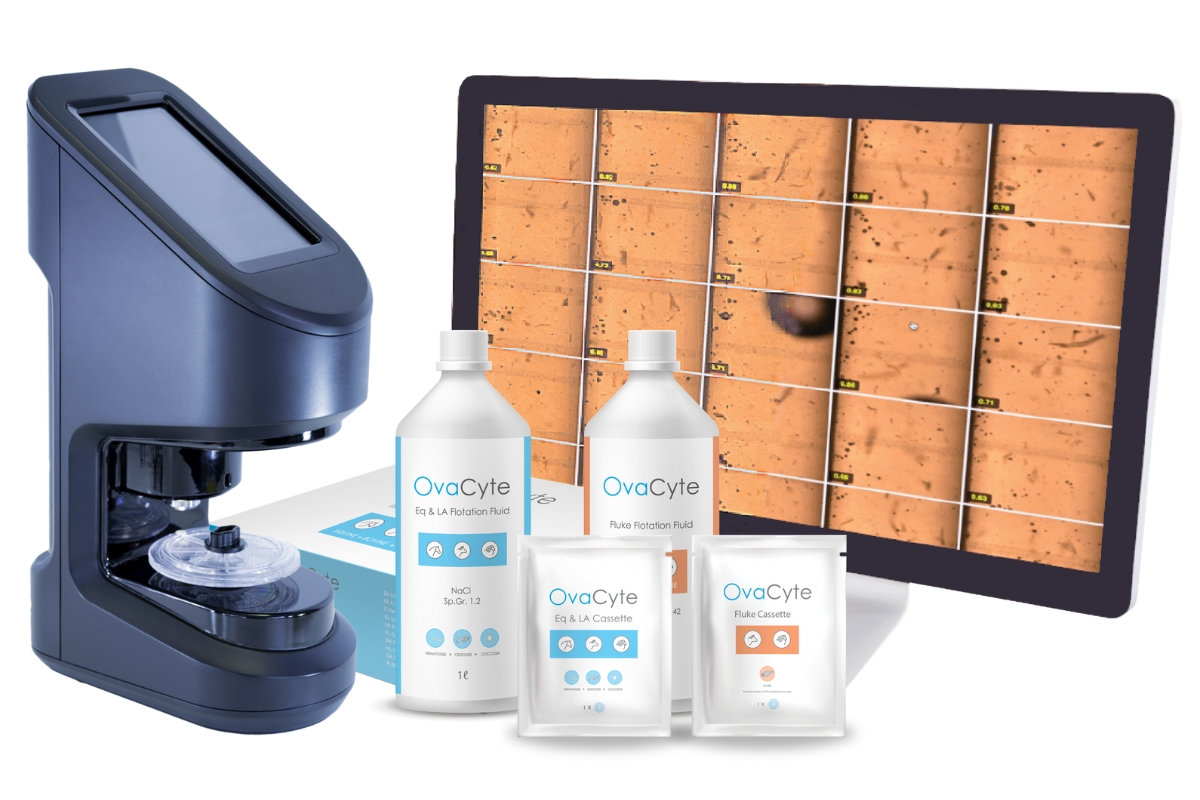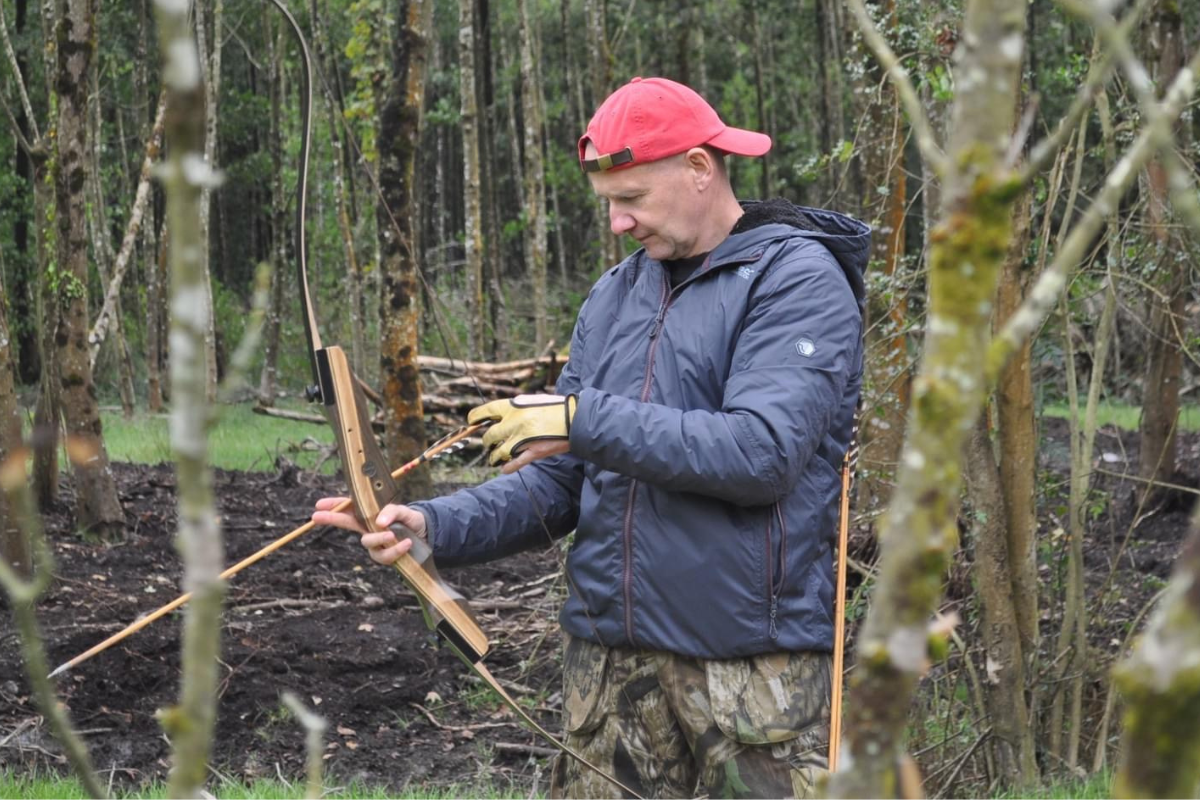Gastrointestinal parasites pose a significant challenge to the health and productivity of cattle and sheep. Controlling these parasites is a complex task that requires a comprehensive and sustainable approach. The growing concern of anthelmintic resistance calls for continuous research and innovation in this field. However, with the right knowledge, tools and strategies, vets and farmers can effectively manage these threats and ensure the welfare and productivity of their livestock.
Faecal Egg Counting (FEC) remains a key component of any effective parasite control plan in both sheep flocks and cattle herds. It works by measuring the number of worm eggs in faeces and is used to monitor the worm burden in the animals. The results are presented as the number of eggs per gram (epg) of faeces, which is an indication of how many adult egg laying worms are in the gastrointestinal system of the animal. FECs can be used to help determine the need to treat a group of cattle or sheep. We can test if a treatment has been fully effective and also get information on the amount of contamination going onto the pasture.
Ideally, FECs should be carried out regularly through the grazing season (every few weeks). Interpretation of an FEC result is quite complex and depends on a number of factors which should be discussed with your vet or advisor.
In terms of taking samples, fresh dung is essential (less than 1 hour old). Take at least 10 individual samples per group, or 10% of larger groups. If combining samples to send (a pooled sample), each individual sample must be the same size. Samples should also be taken at random, and stored in a fridge in airtight bags or pots. They should be tested as soon as possible, to ensure the result is representative.
Resistance of parasites to active ingredients in our anthelminthic products is a massive concern for the future of the sheep industry. In the UK, SCOPS (Sustainable Control of Parasites in Sheep) is a voluntary, industry led group which works in the interest of the UK sheep industry, and recognises that resistance to parasites in sheep has the potential to become a huge problem in terms of animal welfare and future profitability of the sector.
SCOPS recommendations are based on four key principles:
- Always make sure any parasite treatment you give is fully effective. This involves choosing the correct product, administering the product according to instructions, carrying out good dosing practices, checking for treatment efficacy, and storing and disposing of the product correctly.
- Reduce reliance on parasite treatment through grazing management, monitoring through accessing forecasting tools e.g. Nematodirus watch, and through the use of faecal egg counts (FECs) for both monitoring and diagnosis.
- Avoid bringing in resistant parasites by following a robust quarantine routine.
- Minimise selection for parasites that are resistant to treatment. For example, by using targeted selective treatment.
 In cattle, the presence of gut worms causes a condition called parasitic gastroenteritis (PGE). The most economically important species that cause PGE are Ostertagia and Cooperia. Resistance to anthelmintics has been detected in both species in many countries including the UK.
In cattle, the presence of gut worms causes a condition called parasitic gastroenteritis (PGE). The most economically important species that cause PGE are Ostertagia and Cooperia. Resistance to anthelmintics has been detected in both species in many countries including the UK.
Classic symptoms of PGE in young animals are diarrhoea, reduced feed intake (which impacts growth rates), and a rapid drop in condition. PGE as a result of uncontrolled worm infections has significant negative economic effects causing suboptimal production and a loss of profitability for the farmer. Although young cattle are usually the focus of worm control, adult cattle should not be overlooked as they can be a source of environmental contamination and can also experience production loss.
Similar to SCOPS, a valuable resource for cattle farmers in the UK is COWS (Control Of Worms Sustainably) and can be accessed at www.cattleparasites.org.uk
COWS suggests the following top tips for controlling cattle roundworms.
- Identify Risk
- All cattle on pasture are at risk with young animals being at most risk of PGE.
- Permanent pastures that have been grazed by youngstock in the previous 6 months are a high risk.
- Time of year with mid-summer onwards carrying higher risk.
- Young cattle not treated with an anthelmintic at housing are at high risk in late winter.
- Treat Appropriately
- Utilize targeted treatment (either individual animals or groups of animals) at the appropriate times. Specific diagnostic test including FECs and growth rates will help identify cattle that require treatment.
- Strategic use of wormers.
- Effective treatment at the time of housing.
- Avoid Resistance
- Follow label instructions of anthelmintics correctly.
- Avoid treating cattle unnecessarily.
Fluke parasites can also cause considerable issues in both cattle and sheep. According to COWS, the effects of liver fluke infection on growth rate and milk yield are estimated to cost the UK cattle industry up to £40.4 million annually. These losses to livestock and food industries are estimated to be up to £2 billion worldwide. Milk production losses of 8% in cows, along with meat production losses of 20% in cattle and 30% in sheep are apparent.
The effect of liver fluke disease on fertility is also evident, along with a longer time for beef cattle to reach market weights. Both of these effects come at a cost to the environment, in a time where farmers are under increasing pressure to produce milk and meat as sustainably as possible. Therefore, an effective and sustainable parasite control within herds is essential. A multidisciplined approach involving strategic flukicide product choice to reduce pasture contamination and drug resistance, alongside pasture management to restrict cattle access to snail habitats and quarantine of new stock with unknown infection status is recommended by COWS.
 With advances in technology, FEC automated systems using artificial intelligence have recently been made available. One such technology is OvaCyte. OvaCyte is an automated FEC system which was introduced to Irish and UK market by Duggan Veterinary Supplies in 2022.
With advances in technology, FEC automated systems using artificial intelligence have recently been made available. One such technology is OvaCyte. OvaCyte is an automated FEC system which was introduced to Irish and UK market by Duggan Veterinary Supplies in 2022.
The OvaCyte machine offers farmers the opportunity to get a faecal egg count (FEC) run within their local vet practice. It is a quick and easy test to run and can be done at the point of care removing the need to send samples to a lab. Results are accessible within minutes, meaning the process of engaging the farmer or client in a discussion on the best options for parasite treatment is effective and efficient.
The OvaCyte machine can now run ovine, bovine and equine samples for a number of species of fluke and worms. Sample preparation and testing takes only a few minutes. The testing process is automated using a patented cassette and scanning microscope.
The system automatically takes multiple images and send them to the cloud where proprietary artificial intelligence algorithms identify and count the eggs and send the results back instantaneously. This AI technology removes human error and is a highly standardised and validated system. OvaCyte has been shown in clinical trials to provide more consistent and higher quality results than the manual McMaster method, so sheep and cattle farmers can have confidence that their FEC results are highly accurate, meaning it is easier to make the best decisions on dosing practices within their flock or herd.
Contact Duggan Veterinary Supplies at uksales@dugganvet.com or sales@dugganvet.ie.



